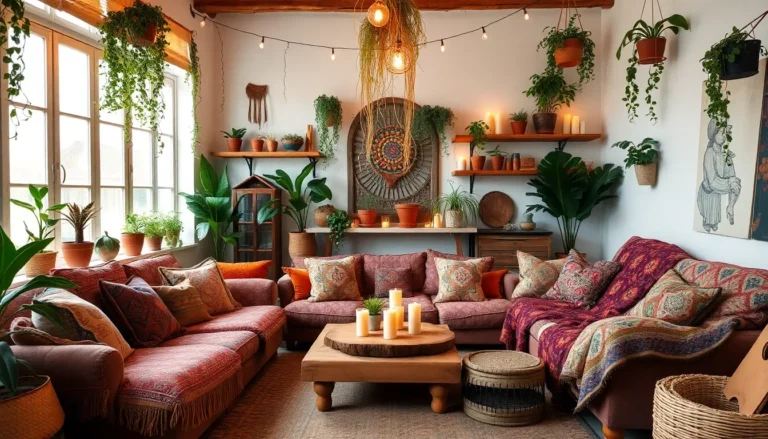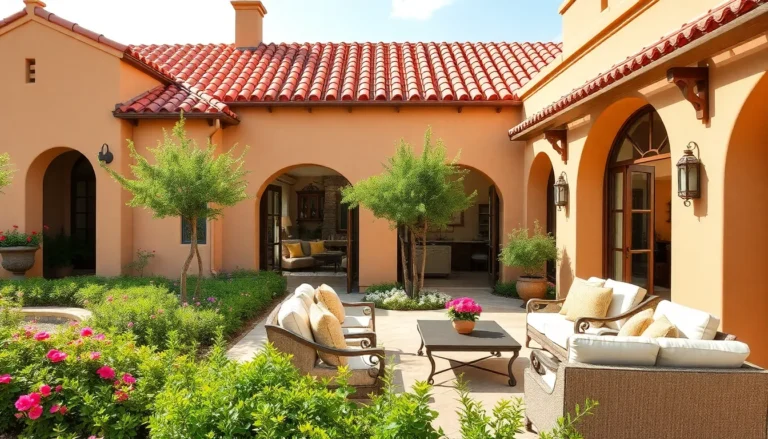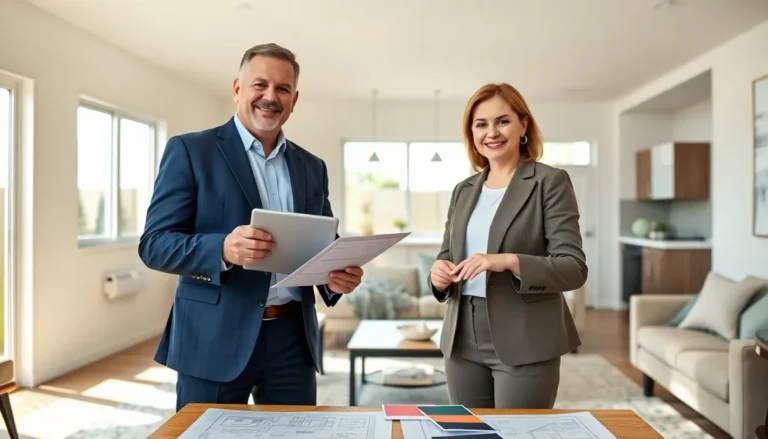Table of Contents
ToggleIn a world that never seems to hit the pause button, the concept of elevated relaxation corners is a breath of fresh air—or maybe a cozy blanket and a warm cup of tea. Imagine a space where stress takes a backseat and tranquility reigns supreme. These corners aren’t just about plopping down a bean bag and calling it a day; they’re carefully curated havens designed to recharge the mind and body.
Whether it’s a nook filled with plush cushions, soft lighting, or a zen garden that whispers sweet nothings to your soul, elevated relaxation corners are the antidote to modern chaos. So why not transform that forgotten corner of your home into a sanctuary? After all, finding your chill shouldn’t require a passport or a plane ticket—just a little creativity and a sprinkle of whimsy.
What Are Elevated Relaxation Corners?
Elevated relaxation corners represent specially curated spaces designed for comfort and tranquility within homes. These areas focus on reducing stress and enhancing well-being. Functionality merges with aesthetics, featuring elements like comfortable seating, ambient lighting, and decorative accents that inspire calmness.
Soft textures play a crucial role in these corners. Plush cushions, cozy throws, and inviting rugs provide warmth and support, encouraging individuals to unwind. Natural materials, including wood and stone, enhance the serene atmosphere. Around these corners, delicate plants or zen gardens contribute to a sense of peace and balance.
Placement matters significantly when creating an elevated relaxation corner. Positioning can determine how inviting the space feels. Corners near windows allow natural light to filter in, creating a brighter environment. Incorporating soft, warm lighting options, such as fairy lights or lamps with dimmers, enhances the overall ambiance.
Personalization enhances the experience significantly. Individuals may choose to add artwork or meaningful decor to reflect their interests. Incorporating books, journals, or calming music further enriches the relaxation experience, making each corner unique to its owner.
Accessibility boosts relaxation corner effectiveness. Making these spaces easily reachable encourages individuals to take breaks from daily routines. With versatility in design, corners can adapt to various rooms, such as living areas, bedrooms, or even balconies. Effectively, elevated relaxation corners transform overlooked spaces into peaceful retreats, promoting emotional and mental wellness at home.
Benefits of Elevated Relaxation Corners
Elevated relaxation corners offer significant advantages, contributing to overall well-being and enhancing daily life.
Improved Mental Well-Being
Relaxation spaces play a crucial role in boosting mental health. These corners provide individuals with an oasis for mindfulness and reflection. Elevated relaxation corners reduce anxiety by creating environments where one can unwind and recharge. Natural elements, such as plants and soft lighting, foster calmness, promoting a sense of peace. Regular use of these spaces leads to increased emotional resilience, allowing individuals to better manage stress and challenges in their lives. Incorporating personal touches adds to the comfort, turning these areas into sanctuaries of tranquility. Designing places that encourage relaxation makes a positive impact on mental clarity and emotional stability.
Enhanced Creativity and Productivity
Elevated relaxation corners stimulate creativity and enhance productivity. These thoughtfully designed spaces provide a conducive atmosphere for brainstorming and ideation. Stepping away from the usual work environment allows the mind to breathe and generate fresh perspectives. By surrounding oneself with calming aesthetics, individuals can tap into their creativity more effectively. The change in scenery encourages innovative thinking, leading to improved problem-solving skills. Additionally, these relaxation corners serve as reminders to take breaks, preventing burnout and maintaining focus. Enhanced creativity and productivity flourish when individuals prioritize moments of stillness in their daily routines.
Design Ideas for Elevated Relaxation Corners
Creating elevated relaxation corners requires careful consideration of various design elements. Thoughtful integration of specific features can elevate the overall ambiance of these spaces.
Nature-Inspired Elements
Incorporating nature-inspired elements enhances tranquility. Indoor plants purify the air while adding vibrant green hues. Natural materials like wood and stone create a sense of grounding. Selecting soft textiles like cotton or linen fosters comfort. Art depicting serene landscapes further connects the space to the outdoors. Using natural light through windows enhances the overall calm. These elements together promote a soothing environment, transforming corners into peaceful retreats.
Minimalist Approaches
Adopting a minimalist approach simplifies design and maximizes comfort. Focusing on functionality ensures each item serves a purpose. Choosing neutral color palettes fosters a serene atmosphere. Limiting clutter encourages mindfulness and relaxation. Selecting a single statement piece, like a unique chair or artwork, draws the eye without overwhelming the space. Prioritizing open layouts allows for free movement and airflow. Ultimately, minimalism creates a serene retreat that nurtures relaxation and well-being.
Materials and Furniture Choices
Choosing the right materials and furniture enhances the atmosphere of elevated relaxation corners. Consider options that combine durability with comfort to create inviting spaces.
Sustainable Options
Sustainable materials promote environmental consciousness while adding charm to relaxation corners. Bamboo furniture offers strength and elegance, making it a popular choice. Recycled wood pieces provide rustic appeal, preserving natural aesthetics. Organic fabrics like cotton or linen ensure soft textures and comfort. Additionally, plants help purify the air and bring a touch of nature indoors. Opting for eco-friendly materials not only supports sustainability but also contributes to personal well-being.
Comfort vs. Aesthetics
Balancing comfort and aesthetics creates an inviting relaxation corner. Choose plush seating, such as oversized chairs or ottomans, to enhance relaxation. Prioritize soft cushions and throws that add warmth. Aesthetic elements like stylish rugs can define the space while complementing the overall design. Color palettes should evoke tranquility, using soft hues for a calming effect. Personal decorative accents like artwork can reflect individual style and improve overall ambiance. Always remember, a comfortable space facilitates relaxation, fostering a serene atmosphere for rejuvenation.
Conclusion
Elevated relaxation corners offer a unique opportunity to enhance well-being within the home. By transforming overlooked spaces into serene retreats, individuals can cultivate an environment that prioritizes comfort and mindfulness. These corners not only provide a sanctuary for relaxation but also inspire creativity and emotional resilience.
With thoughtful design choices and personalization, anyone can create a space that reflects their style while promoting tranquility. Embracing the concept of elevated relaxation corners can lead to a healthier mindset and a more balanced lifestyle, proving that peace and rejuvenation are just a corner away.







